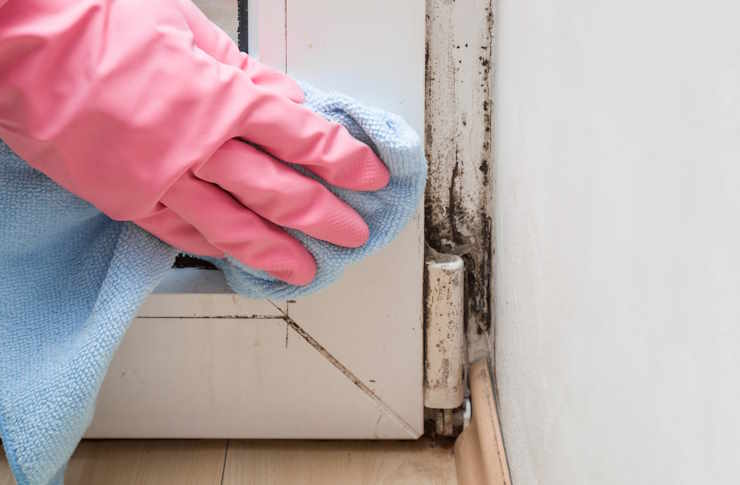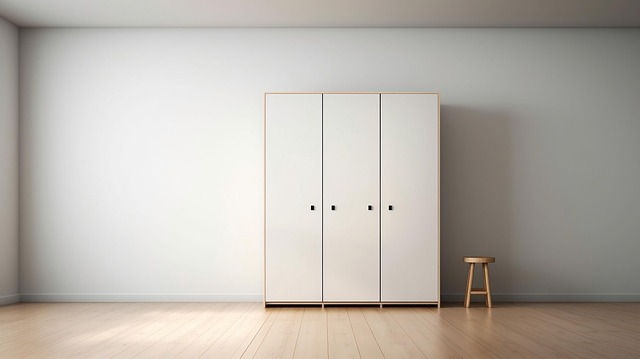Everyday Tips for Wall Mold Removal in Kitchen and Bath
Wall mold in kitchens and bathrooms is a common household problem that affects millions of American homes. These moisture-rich environments create ideal conditions for mold growth, which can appear as black, green, or white patches on walls, around fixtures, and in corners. Understanding effective removal techniques and prevention strategies helps maintain a healthier home environment while protecting your family from potential respiratory issues and property damage.

What Are the Most Effective Wall Mold Cleaning Tips?
The foundation of successful mold removal starts with proper safety preparation. Before beginning any cleaning process, wear protective gear including gloves, goggles, and an N95 mask to prevent inhalation of mold spores. Ensure adequate ventilation by opening windows and using exhaust fans to reduce spore concentration in the air.
For light mold growth covering areas smaller than 10 square feet, homeowners can typically handle removal independently. Create a cleaning solution using one part white vinegar to one part water, or mix one tablespoon of dish soap with one cup of water. These natural solutions effectively kill most common household mold species without introducing harsh chemicals into living spaces.
Always test cleaning solutions on a small, inconspicuous area first to ensure they won’t damage painted or finished surfaces. Work from top to bottom when cleaning, and dispose of all cleaning materials immediately after use to prevent cross-contamination to other areas of your home.
How Do Simple Wall Mold Cleaning Tips Work in Practice?
Start by removing loose mold growth using a dry brush or vacuum with a HEPA filter attachment. This initial step reduces the amount of viable spores that might become airborne during the wet cleaning process. Focus on visible mold patches and surrounding areas where spores might have settled.
Apply your chosen cleaning solution generously to affected areas and allow it to sit for 10-15 minutes. This contact time ensures the solution penetrates the mold colony and kills the roots, preventing immediate regrowth. Use a stiff brush or scrub pad to gently remove stubborn mold stains, working in circular motions to lift embedded growth from textured surfaces.
After scrubbing, rinse the area thoroughly with clean water and dry completely using fans or dehumidifiers. Moisture remaining on cleaned surfaces can quickly lead to new mold growth, especially in high-humidity environments like bathrooms. Monitor cleaned areas for several weeks to ensure complete removal and early detection of any returning growth.
Which Wall Mold Remover Cleaning Spray Options Work Best?
Commercial mold removal sprays offer convenience and often contain more potent active ingredients than homemade solutions. Look for products containing hydrogen peroxide, which effectively kills mold while being safer for indoor use than chlorine bleach. Many professional-grade sprays also include surfactants that help the solution penetrate porous surfaces more effectively.
Bleach-based products can effectively kill surface mold but may not penetrate deep enough to eliminate root systems in porous materials like drywall or grout. Additionally, bleach can discolor fabrics and create potentially harmful fumes when mixed with other cleaning products, making proper ventilation essential during use.
Enzyme-based cleaners represent another effective option, particularly for organic surfaces. These products break down the proteins that mold uses for nutrition, creating an environment less conducive to future growth. However, enzyme cleaners typically require longer contact times and may need multiple applications for complete effectiveness.
| Product Type | Active Ingredient | Application Method | Estimated Cost Range |
|---|---|---|---|
| Hydrogen Peroxide Spray | 3% Hydrogen Peroxide | Direct spray application | $8-15 per bottle |
| Bleach-Based Cleaner | Sodium Hypochlorite | Spray or wipe application | $5-12 per bottle |
| Enzyme Cleaner | Biological enzymes | Multiple applications needed | $12-25 per bottle |
| Vinegar Solution | Acetic Acid | Homemade spray mixture | $2-5 per treatment |
Prices, rates, or cost estimates mentioned in this article are based on the latest available information but may change over time. Independent research is advised before making financial decisions.
How Can You Prevent Future Mold Growth?
Moisture control represents the most critical factor in preventing mold recurrence. Install and regularly use exhaust fans in bathrooms and kitchens, ensuring they vent directly outside rather than into attic spaces. Maintain indoor humidity levels between 30-50% using dehumidifiers or HVAC systems with humidity control features.
Regular cleaning schedules help identify and address mold growth before it becomes extensive. Wipe down bathroom walls after showers, clean kitchen surfaces after cooking, and inspect areas prone to condensation weekly. Address water leaks immediately, as mold can begin growing within 24-48 hours of water exposure.
Consider applying mold-resistant paint or sealers to vulnerable areas after cleaning. These products contain antimicrobial additives that inhibit mold growth and provide longer-lasting protection than standard paints. Focus application on areas with frequent moisture exposure, such as shower surrounds and areas near sinks.
When Should You Call Professional Services?
Professional mold remediation becomes necessary when dealing with extensive growth covering more than 10 square feet, or when mold appears repeatedly despite proper cleaning efforts. Professionals have specialized equipment including industrial-grade air filtration systems, moisture meters, and powerful cleaning solutions not available to consumers.
Hidden mold growth behind walls, under flooring, or in HVAC systems requires professional assessment and remediation. These situations often involve structural repairs and specialized techniques to prevent future problems. Professional services also provide documentation valuable for insurance claims and real estate transactions.
Consider professional help if anyone in your household experiences persistent respiratory symptoms, allergic reactions, or other health issues that might be mold-related. Professionals can perform air quality testing to determine spore concentrations and identify specific mold species that might require targeted treatment approaches.
Effective wall mold removal in kitchens and bathrooms requires combining proper cleaning techniques with ongoing moisture management. Regular maintenance, appropriate cleaning products, and prompt attention to water issues help maintain healthy indoor environments. When problems exceed typical household capabilities, professional services provide comprehensive solutions and long-term protection strategies.
This article is for informational purposes only and should not be considered medical advice. Please consult a qualified healthcare professional for personalized guidance and treatment.




